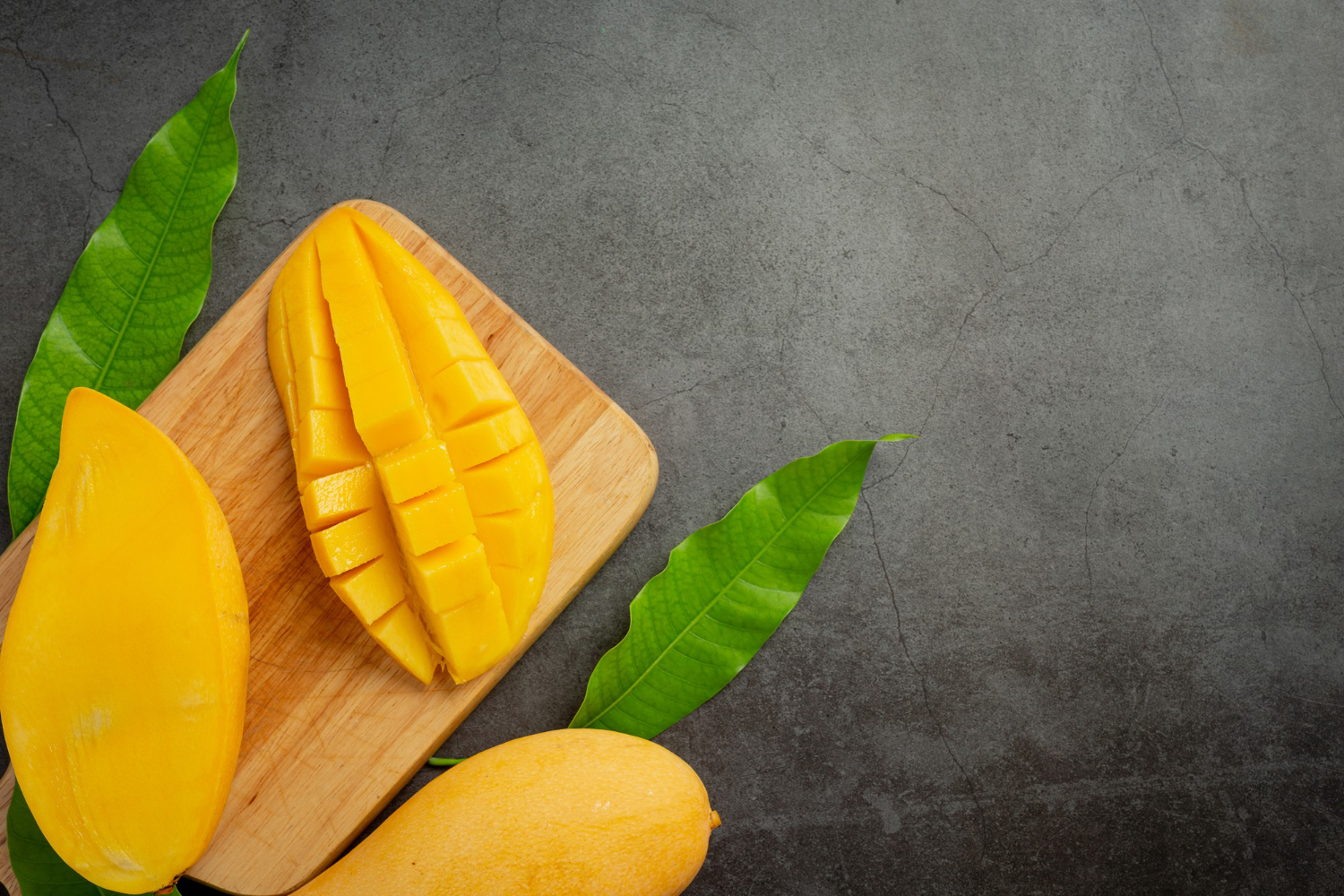Mango is a tropical fruit known for its deliciously sweet and juicy flesh. Here’s some information about mangoes:
- Varieties: There are many mango varieties available, each with its own unique flavor, texture, and color. Some popular mango varieties include Alphonso, Kent, Tommy Atkins, Ataulfo (also known as Honey Mango), and Keitt.
- Nutrition: Mangoes are not only tasty but also offer various health benefits. They are rich in vitamins A and C, as well as dietary fiber. Mangoes also contain antioxidants that help protect against oxidative stress.
- Selection: When selecting mangoes, look for fruits that are firm but slightly yielding to gentle pressure. Avoid mangoes that are excessively soft or bruised. The color can vary depending on the variety, so it’s not always an indicator of ripeness.
- Ripening: If you have purchased slightly unripe mangoes, you can ripen them at home by placing them at room temperature until they reach your desired level of ripeness. You can speed up the ripening process by placing the mangoes in a paper bag.
- Eating: To eat a mango, first, wash it thoroughly. Hold the mango vertically and make a vertical cut along the fruit, avoiding the large seed in the center. You can then scoop out the flesh using a spoon or cut the flesh into cubes or slices.
- Culinary Uses: Mangoes can be enjoyed fresh as a snack or used in a variety of dishes. They are great in fruit salads, smoothies, desserts like mango sticky rice, and even savory dishes like salsas and chutneys.
- Storage: Ripe mangoes can be stored in the refrigerator for a few days to prolong their freshness. If you have unripe mangoes, it’s best to store them at room temperature until they ripen.
Mangoes are not only delicious but also versatile in the kitchen. Their sweet and tangy flavor makes them a popular fruit enjoyed by many people around the world.

How to grow mango
- Climate and Soil: Mango trees thrive in tropical and subtropical climates. They require full sun and well-drained soil. The soil should be fertile and rich in organic matter.
- Selecting a Mango Variety: Choose a mango variety suitable for your climate and personal preference. Popular varieties include Alphonso, Kensington Pride, Tommy Atkins, and Kent, among others.
- Planting Location: Select a spacious location that provides enough room for the mango tree to grow and spread its branches. Make sure there are no nearby structures or trees that could shade or obstruct the tree’s growth.
- Digging the Hole: Dig a hole that is wider and deeper than the root ball of the mango tree. The hole should be large enough to accommodate the roots without crowding or bending them.
- Preparing the Soil: Mix the excavated soil with well-rotted compost or organic matter. This helps improve soil fertility and drainage. Fill the bottom of the hole with this amended soil.
- Planting the Tree: Place the mango tree gently into the hole, ensuring that it sits at the same level it was previously planted. Backfill the hole with the amended soil, firming it gently around the roots.
- Watering: After planting, water the mango tree thoroughly to settle the soil and provide moisture for the roots. Keep the soil consistently moist, especially during the first few months of growth.
- Mulching: Apply a layer of organic mulch, such as wood chips or straw, around the base of the tree. Mulch helps retain soil moisture, suppress weed growth, and regulate soil temperature.
- Pruning: Prune the mango tree regularly to remove dead, damaged, or crossing branches. This helps promote healthy growth and airflow within the tree.
- Fertilization: Mango trees benefit from regular fertilization. Apply a balanced fertilizer specifically formulated for fruit trees, following the manufacturer’s instructions. Fertilize in the spring and summer months to support growth and fruit production.
- Support and Staking: If the mango tree is young or unstable, you may need to provide support by staking it. Use a sturdy stake and tie the tree securely to prevent it from leaning or falling over.
- Patience and Care: Mango trees take time to grow and bear fruit. Be patient and provide regular care, including watering, fertilizing, and protecting the tree from pests and diseases. It may take several years before you can enjoy a bountiful mango harvest.
Remember to consult local gardening resources or experts for specific advice on mango cultivation in your region, as conditions may vary.
Source of information : https://chat.openai.com/
Other fruits : https://thailandseasonfruit.com/
